News

NASA’s Operation IceBridge Completes Eleven Years of Polar Surveys
For eleven years from 2009 through 2019, the planes of NASA’s Operation IceBridge flew above the Arctic, Antarctic and Alaska, gathering data on the height, depth, thickness, flow and change of sea ice, glaciers and ice sheets.
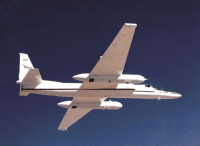
NASA to Study East Coast Snowstorms from VA. Skies
NASA has announced it will use Wallops Island Flight Facility, just south of Chincoteague Island, as a jumping-off point to study Atlantic snowstorms starting in January.
It’s the first major field campaign to study East Coast snowstorms in 30 years.
The Investigation of Microphysics and Precipitation for Atlantic Coast-Threatening Snowstorms (IMPACTS) study will send a high-altitude aircraft (flying from Savannah, Georgia) and a cloud-sampling aircraft (flying from Wallops Island) to look closer at how snow is distributed in the clouds.
NASA explains that the “cloud processes” responsible for snowstorms are difficult to measure, and forecast models can’t reproduce them very well. That makes for poor snowfall predictions.
“People see pictures of these big swaths of clouds and think they’re snowing everywhere, but they’re not,” said IMPACTS principal investigator Lynn McMurdie at the University of Washington in Seattle. “Inside the clouds are these long narrow regions of more intense snow bands. We’re trying to understand why they form and how they evolve with the developing storm.”
Since the last time East Coast snowstorms were studied from the air, instruments have become much more advanced. NASA says now is “an ideal time to conduct a well-equipped study to identify key processes and improve remote sensing and forecasting of snowfall.”
NASA’s ER-2 and P-3 aircraft will fly for three six-week deployments.
-Meg Walburn Viviano

NASA Embarks on Five U.S. Expeditions Targeting Air, Land and Sea
NASA is sending five airborne campaigns across the United States in 2020 to investigate fundamental processes that ultimately impact human lives and the environment, from snowstorms along the East Coast to ocean eddies off the coast of San Francisco.
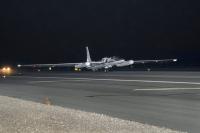
New Moon-Seeking Sensor Aims to Improve Earth Observations
A new instrument with its eye on the Moon is taking off aboard a high-altitude NASA plane to measure the Moon’s brightness and eventually help Earth observing sensors make more accurate measurements.

A Third of California Methane Traced to a Few Super-Emitters
NASA scientists are helping California create a detailed, statewide inventory of methane point sources - highly concentrated methane releases from single sources - using a specialized airborne sensor. The new data, published this week in the journal Nature, can be used to target actions to reduce emissions of this potent greenhouse gas.

IceBridge Takes Flight from Down Under
IceBridge has been gathering data on Arctic and Antarctic ice sheets, glaciers and sea ice for 10 years. It was designed to ‘bridge the gap’ in between the Ice, Cloud and land Elevation Satellite (ICESat), which stopped collecting data in 2009, and ICESat-2, which launched in September 2018. Over the past decade, IceBridge has been based out of airports in Alaska, Greenland, Chile, Argentina and Antarctica – but for this final polar campaign, it has a new base at Hobart in Tasmania, Australia.

Philippine Airborne Campaign Targets Weather, Climate Science
Led by NASA, the U.S. Naval Research Laboratory (NRL) and the Manila Observatory in conjunction with the Philippine Atmospheric, Geophysical and Astronomical Services Administration and the Philippine Department of Science and Technology, CAMP2Ex comprises an interdisciplinary, international team of field researchers, modelers and remote sensing developers.
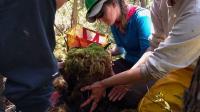
NASA Studies How Arctic Wildfires Change the World
Wildfires in the Arctic often burn far away from populated areas, but their impacts are felt around the globe. From field and laboratory work to airborne campaigns and satellites, NASA is studying why boreal forests and tundra fires have become more frequent and powerful and what that means for climate forecasting, ecosystems and human health.
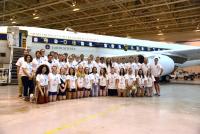
Student Airborne Research Program Takes Flight over California
Twenty-eight undergraduate students are participating in an eight-week NASA airborne science field experience this summer that will immerse them in the agency's Earth Science research.

Through Smoke and Fire, NASA Searches for Answers
This summer, NASA is embarking on several field campaigns across the world to investigate longstanding questions surrounding fire and smoke. Aircraft will fly through smoke and clouds to improve air quality, weather and climate forecasting, and investigate fire-burned forests to capture ecosystem changes that have global impact.

Study Predicts More Long-Term Sea Level Rise from Greenland Ice
Greenland’s melting ice sheet could generate more sea level rise than previously thought if greenhouse gas emissions continue to increase and warm the atmosphere at their current rate, according to a new modeling study. The study, which used data from NASA’s Operation IceBridge airborne campaign, was published in Science Advances today.

Looking For Freshwater In All the Snowy Places
Snowflakes that cover mountains or linger under tree canopies are a vital freshwater resource for over a billion people around the world. To help determine how much freshwater is stored in snow, a team of NASA-funded researchers is creating a computer-based tool that simulates the best way to detect snow and measure its water content from space.
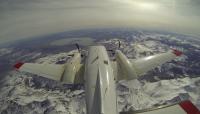
NASA Explores Our Changing Freshwater World
Researchers funded by NASA have used satellite and airborne data to better inform existing tools for flooding, drought forecasts and famine relief efforts, and for planning and monitoring regional water supplies. These efforts are tackling some of the most pressing needs of people around the world.

Modified spy plane to see whether towering storms pose new threat to ozone layer
NASA's ER-2 is again preparing to soar to the overworld in search of a potential new threat to the ozone layer.
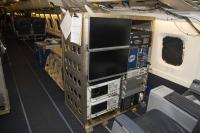
Illuminating Gases in The Sky: NASA Technology Pinpoints Potent Greenhouse Gases
Research scientists at NASA’s Langley Research Center in Hampton, Virginia, have created a new airborne instrument that can directly measure water vapor and floating particles in the atmosphere. The new data will help check the accuracy of satellite measurements, and improve weather and climate forecasts.

NASA Testing Airborne Lasers to Touch the Wind
A group of NASA researchers could soon be blown away by data they collect during an airborne science campaign that will span from the Pacific coast to Hawaii.

NASA Begins Final Year of Airborne Polar Ice Mission
This is the last year for Operation IceBridge, NASA’s most comprehensive airborne survey of ice change. Since the launch of its first Arctic campaign in spring 2009, IceBridge has enabled discoveries ranging from water aquifers hidden within snow in southeast Greenland, to the first map indicating where the base of the massive Greenland Ice Sheet is thawed, to detailed depictions of the evolving Arctic sea ice cover and the thickness of the overlying snow.

A Decade of Exploring Alaska’s Mountain Glaciers
In Alaska, 5 percent of the land is covered by glaciers that are losing a lot of ice and contributing to sea level rise. To monitor these changes, a small team of NASA-funded researchers has been flying scientific instruments on a bright red, single-engine plane since spring 2009.
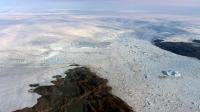
Cold Water Currently Slowing Fastest Greenland Glacier
NASA research shows that Jakobshavn Glacier, which has been Greenland's fastest-flowing and fastest-thinning glacier for the last 20 years, has made an unexpected about-face. Jakobshavn is now flowing more slowly, thickening, and advancing toward the ocean instead of retreating farther inland. The glacier is still adding to global sea level rise — it continues to lose more ice to the ocean than it gains from snow accumulation — but at a slower rate.
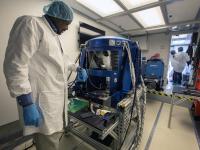
Going Where the Wind Takes It
Developed at NASA's Langley Research Center in Hampton, Virginia, DAWN uses laser pulses to take highly accurate measurements of vector wind speed and direction. In the upcoming campaign, which will be based out of NASA's Armstrong Flight Research Center in Palmdale, California, scientists will use DAWN to validate measurements from Atmospheric Dynamics Mission Aeolus (ADM-Aeolus), a European Space Agency (ESA) satellite that profiles wind speeds across the globe.

NASA's Greenland Mission Still Surprises in Year Four
Only seven months after NASA's Oceans Melting Greenland (OMG) mission wrapped its last field campaign on the world's largest island, an OMG crew is back in Greenland to collect more data. With two or three field projects a year since 2016, no wonder OMG has made the most comprehensive measurements yet of how ocean water lapping at the undersides of Greenland's melting glaciers affects them. All that data has answered a lot of existing questions — and it's raised plenty of new ones.

NASA's Greenland Mission Still Surprises in Year Four
Only seven months after NASA's Oceans Melting Greenland (OMG) mission wrapped its last field campaign on the world's largest island, an OMG crew is back in Greenland to collect more data. With two or three field projects a year since 2016, no wonder OMG has made the most comprehensive measurements yet of how ocean water lapping at the undersides of Greenland's melting glaciers affects them. All that data has answered a lot of existing questions — and it's raised plenty of new ones.
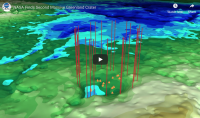
NASA Finds Possible Second Impact Crater Under Greenland Ice
A NASA glaciologist has discovered a possible second impact crater buried under more than a mile of ice in northwest Greenland. This follows the finding, announced in November 2018, of a 19-mile-wide crater beneath Hiawatha Glacier – the first meteorite impact crater ever discovered under Earth’s ice sheets. Though the newly found impact sites in northwest Greenland are only 114 miles apart, at present they do not appear to have formed at the same time.
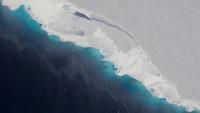
Huge Cavity in Antarctic Glacier Signals Rapid Decay
A gigantic cavity — two-thirds the area of Manhattan and almost 1,000 feet (300 meters) tall — growing at the bottom of Thwaites Glacier in West Antarctica is one of several disturbing discoveries reported in a new NASA-led study of the disintegrating glacier. The findings highlight the need for detailed observations of Antarctic glaciers' undersides in calculating how fast global sea levels will rise in response to climate change.

NASA Mobilizes to Aid California Fires Response
For the past two weeks NASA scientists and satellite data analysts have been working every day producing maps and damage assessments that can be used by disaster managers battling the Woolsey Fire near Los Angeles and the Camp Fire in Northern California. The agency-wide effort also deployed a research aircraft over the Woolsey Fire on Nov. 15 to identify burned areas at risk of mudslides in advance of winter rains expected in the area.
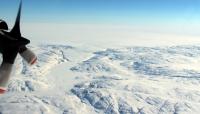
International Team, NASA Make Unexpected Discovery Under Greenland Ice
An international team of researchers, including a NASA glaciologist, has discovered a large meteorite impact crater hiding beneath more than a half-mile of ice in northwest Greenland. The crater — the first of any size found under the Greenland ice sheet — is one of the 25 largest impact craters on Earth, measuring roughly 1,000 feet deep and more than 19 miles in diameter, an area slightly larger than that inside Washington’s Capital Beltway.
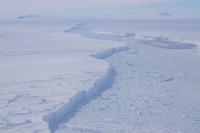
Massive Antarctic Iceberg Spotted on NASA IceBridge Flight
NASA’s Operation IceBridge flew over an iceberg that is three times the size of Manhattan – the first time anyone has laid eyes on the giant iceberg, dubbed B-46 by the U.S. National Ice Center, that broke off from Pine Island Glacier in late October.

African Smoke-Cloud Connection Target of NASA Airborne Flights
This month, NASA's P-3 research aircraft and a team of scientists return on their third deployment to this region as part of the Observations of Aerosols Above Clouds and their Interactions mission, or ORACLES, gathering data on how aerosols such as smoke affect clouds and in turn Earth's climate.
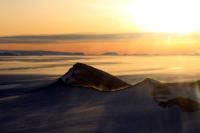
Operation IceBridge, ICESat-2 Join Forces To Survey Antarctica
NASA’s decade-long airborne survey of polar ice, Operation IceBridge, is once again probing Antarctica. But this year is different: it is the first time that the IceBridge team and instruments survey the frozen continent while NASA’s newest satellite mission, the Ice, Cloud and land Elevation Satellite-2 (ICESat-2), studies it from space.
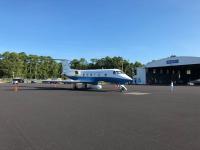
NASA Airborne Team Surveys Flooding from Hurricane Florence
In the aftermath of Hurricane Florence, which struck the Carolinas on Sept. 14 causing widespread damage, NASA quickly deployed a sophisticated airborne radar to give disaster response agencies a much-needed view of floodwaters that continued to threaten the region.
